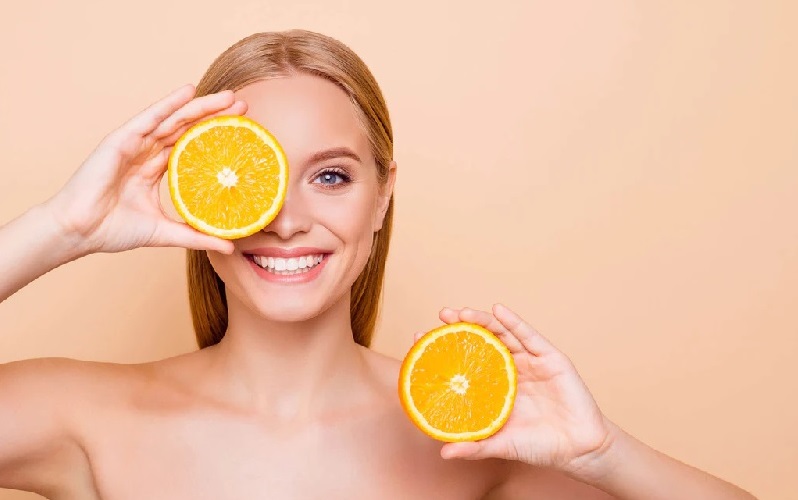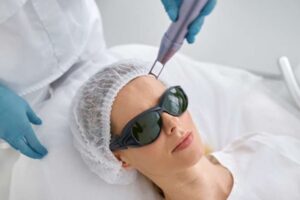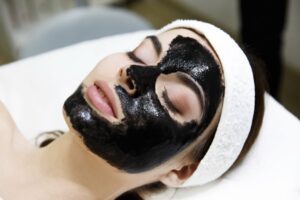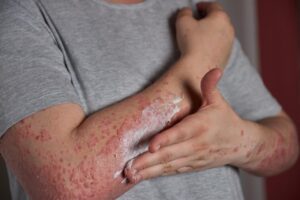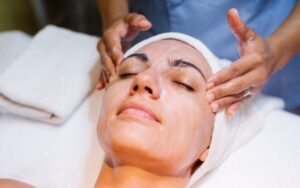Ever heard of people talking about the goodness of antioxidatants. But do you really know what antioxidants are? How are they beneficial for your skin? What are the sources of antioxidants? This article will give you an insight about antioxidants. Before knowing about antioxidants, first we need to know about free radicals.
What are free radicals?
Free radicals are those “free” or “unpaired” electrons that are flying around and cause damage to your cell, structure and genetic material (DNA).

Free radicals play a dual role in our body that can be both beneficial and harmful. Our body purposely creates free radicals to neutralize viruses and bacteria. However, too much of it affects the DNA, lipids and proteins that can trigger diseases. These free radicals are unstable, highly reactive molecules that have one or more unpaired electrons. To gain stability, they attack stable molecules, triggering a chain reaction that damages healthy cells.
How are free radicals formed?
Free radicals are formed from environmental damage, which can result from the sun, pollution, radiation, tobacco and stress, toxic chemicals, to name a few sources. Once an overload of free radicals is present in our system, it causes “oxidative stress” (an imbalance between the production of free radicals and the ability of the body to counteract or detoxify their harmful effects)
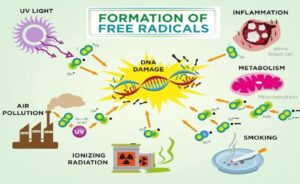
What are antioxidants?
Antioxidants work by reversing and preventing free radical damage or “oxidative stress.” Antioxidants work by “scavenging” those loose electrons so that they cannot cause damage. Antioxidants also help repair existing damage and blunt the inflammatory response to the sun’s harmful rays.

Antioxidants and their Distribution in skin:
Antioxidants which are produced in our body are called “Endogenous antioxidants,” such as lipoid acid, glutathione, L-ariginine, coenzyme Q10, melatonin, uric acid, bilirubin, metal-chelating proteins, transferrin, etc
“Exogenous antioxidants” cannot be produced in the body and must be provided through foods or supplements, such as vitamin E, vitamin C, carotenoids, trace metals (selenium, manganese, zinc), flavonoids, omega-3 and omega-6 fatty acids, etc.
The distribution of antioxidants in the skin are as follows:
- The outer most layer, the cornified envelope of normal human skin contains antioxidants such as glutathione, vitamin C, uric acid, α-tocopherol, squalene, and coenzyme Q10, distributed in a gradient with the highest concentration on the deepest cornified envelope layers.
- Vitamin E, catalase, superoxide dismutase’s, glutathione peroxidases are abundantly present in the viable layer of the epidermis.
- The extracellular space of skin epidermis and dermis, contains large amounts of antioxidants such as ascorbic acid, uric acid, and glutathione.
Major functions of antioxidants in skin:
1. Helps in correcting signs of ageing.
Oxidative stress breaks down collagen, hinders skin’s natural repair process and triggers inflammation and you see these as fine lines, wrinkles, loose skin, acne breakouts and a blotchy skin tone. By scavenging free radicals, antioxidants can help prevent and correct these visible signs and give skin a more youthful glow.
2. Helps to prevent sunburn.
By definition, all antioxidants have anti-inflammatory properties. They blunt your skin’s inflammatory response to the sun’s harmful rays, preventing sunburn and providing enhanced protection against sun damage and photoaging.
3. Helps in skin repair.
Inflamed skin impedes the skin’s rejuvenation process. By reducing inflammation, antioxidants allow skin to repair itself and correct visible damage. Some antioxidants, like vitamin C, can also stimulate collagen production, which is vital for youthful skin.
4. Helps brighten the skin tone.
Free radicals and frequent sun exposure can also trigger changes in our skin’s melanin production, causing dark spots and uneven skin tone. By reducing photodamage, antioxidants can help prevent abnormal skin pigmentations. Some antioxidants (again, like vitamin C) also work as a tyrosinase (an enzyme that stimulates melanin production) inhibitor.
5. May help in preventing skin cancer.
Some antioxidants, such as vitamins A, C and E, have anti-carcinogenic properties and may help prevent skin cancer.
6. Their anti-inflammatory effect is also useful in conditions such as psoriasis, alopecia and acute inflammatory conditions.
Dietary sources:

Vitamin C: citrus fruits, black currants, leafy green vegetables and red pepper.
Vitamin E: vegetable oils, seeds, nuts, meat.
Vitamin A: red coloured fruits and vegetables like carrots, sweet potatoes, pink grapes, tomatoes.
Selenium: vegetables (garlic, onion, grains, nuts, soybean), sea food, meat, liver, fish, walnuts, yeast.
Carotenoids: found in many fruits, grains, oil and vegetables (carrots, green plants, squash, spinach)
Flavonoids: green and black tea.
Omega-3 fatty acids: salmon, tuna, halibut, sardines, pollock, walnut, nut oils and flaxseed
Omega-6 fatty acid: vegetable oils, nuts, cereals, eggs, poultry
Take home message:
Use of oral or topical antioxidants will neutralize excess free radicals and can reduce the damage to healthy cells. Oral or topical antioxidants does not replace a diet rich in antioxidants. Antioxidants helps with skin aging, skin rejuvenation and reduce photodamage. Bright-colored fruits and vegetables are an easy way to find for the sources of antioxidants. Oral supplementation of vitamin C, D, E, B vitamins, omega 3 and 6 fatty acids, coQ10 can be taken as recommended by your dermatologist.

